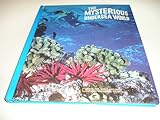I know it might seem ridiculously early but just about this time each year, I start thinking about planning next year's studies. It looks like I may not be alone in this. I've read more than one "planning" post on various blogs lately. Dawn's blog has been one of my favorites for a long time: By Sun and Candlelight and she has some great planning ideas.
Since we use a unit study/living books approach, my first planning step is deciding what we'll be studying for the next year. Last year, we travelled the world. This year was a little more random (oh wait, I think the word is "eclectic.")
Our first unit study was weather. My initial plan was to do one Five in a Row book that related to weather for each week of our study (four FIAR books total.) This turned out to be a little bit too much for us. We either did the weather unit OR the FIAR work, but very rarely did we get to both. I love FIAR way too much to let that happen!
Light was the next unit study on the schedule so we tried a different approach. We first rowed The Little Red Lighthouse and the Great Grey Bridge for a whole week, then we used that as a jumping-off point for our study of light and worked on that for the next two weeks. That went much better.
From the Big Picture to the Daily Schedule
This, by the way, is most definitely not a "how to plan" post. I just thought I'd show you how I do it since I really enjoy reading how other people do it.
Once I have an idea of the FIAR books I want to schedule and the other unit studies we may want to do, I make a list of library books, videos, craft projects, potential field trips, etc. for each one so I can see how much time to allocate. I put each unit into a yearly plan which lays out every week of the year. The ocean in January, snow in February, that sort of thing. Then I plug in all the other subjects. Certain things, like Saxon math and our Bible study, are easy to schedule. TruthQuest History is a little more challenging since I don't know what subjects we might find particularly interesting and want to camp out on. For that reason, I only make four or five weekly schedules at a time. Even then, I usually end up with a lot of arrows and things crossed out or moved around.

And from the weekly schedule, I make out a daily schedule. In the beginning of the school year, it looks like this:

Isn't that lovely and hyper-organized? Unfortunately, it doesn't last - but fortunately, it doesn't have to. The daily lists I scrawl on one side of my planner work just fine too.
I keep all my forms, lists and plans in a three-ring binder, along with our reading log, thoughts for next year's studies, holiday plans, etc. I decorate a new one each year. This year's may seem a little uninspired but I liked the paper so much I didn't want to put anything else on it! It makes me smile.

I hope this has been a little bit helpful. As I said, I always enjoy a peek into other people's homeschools - hopefully you do too!












